Plastic Refractory Installation
Articles
Plastic refractories are delivered in an unfired and formable condition. They are installed by use of a pneumatic hammer (Rammed Installation) to form the refractory mass. These monolithic products are used both for original installations and for patching. Plastic refractories can be used in many varied applications including blast furnaces, basic oxygen furnaces (BOF), steel ladles, iron ladles, argon-oxygen decarburization (AOD), electric arc furnaces (EAF), degasser, furnaces, and more. Plastics are utilized in various locations because they are essentially formed by the installer to fit the specific use area.
Plastic Installation Instructions:
Important aspects for the successful installation and use of plastic refractories include ramming equipment, ramming technique, forming, trimming, venting and curing. While each situation may have some special considerations the fundamentals in brief are as follows:
- Pneumatic ramming tool with 2.5 to 3 inch convex aluminum head. This allows optimum knitting of the plastic refractory slabs required to fill the required space. Care needs to be taken in the amount of ramming (the plastic refractory already has density, the installation process is to knit the individual pieces together) and direction of ramming (toward forms, ports and anchors is recommended).
- Support forms may be required for roofs, arches and ports as the plastic could slump during installation. These forms need to be sturdy and well braced to prevent flexing while the full weight of the refractory plastic is supported.
- Surface finishing is required after the ramming is completed. This includes trimming (use of a trowel or spade to remove excess and shape but not smooth the surface) and peening (ramming around roof anchors to attain a better seal).
- Venting the plastic refractory to allow for escape of steam during the curing process. Generally, this entails driving a 1/8 inch rod through 2/3 of the rammed body thickness on 8 to 12 inch centers.
- Curing or heat-up should begin immediately after installation. Check specific procedures for the installation location and specific material prior to beginning the job as proper curing is important to optimum service performance.
Refractory plastics can be used to patch or repair worn refractory areas whether they were originally brick castable or plastic. For the best results, the worn refractory should be removed back to a sound surface, removing loose material and preferably providing V-shape surfaces that will allow good bonding of the patch to the original refractory. A bonding mortar coating aids in achieving a lasting patch with good adherence
Resco manufactures many types of plastic refractories designed for original installations and patches and for compatibility with the application conditions.

